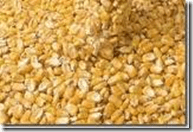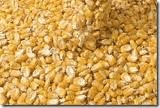 As the combines cut a soggy swathe through the last, damp fields of wheat and barley, we can reflect upon a cereal harvest which produced a wider range of outcomes and emotions than any I can recall.
As the combines cut a soggy swathe through the last, damp fields of wheat and barley, we can reflect upon a cereal harvest which produced a wider range of outcomes and emotions than any I can recall.
At one end of the scale was the UK record wheat yield of 14.3 tonnes per hectare achieved by a farmer called David Hoyles in Lincolnshire. At the other are the hundreds of unfortunate Scottish farmers, some of whom have barely harvested an acre, and who have been forced to watch their crops literally rotting in the field, as the rain has lashed down for day after day. And with wheat at £160 per tonne, that hurts in Scotland.
It has been a mixed picture here in the Westcountry as well. One farmer I know well in Somerset describes it as "the harvest of a lifetime", and when he went through his yields, I could see why. Winter wheat averaging 10 tonnes to the hectare (4 tons per acre), with a best of 11.78 tonnes per hectare, spring barley coming in at 8 tonnes per hectare (3.25 tonnes per acre), oilseed rape averaging a remarkable 5 tonnes per hectare (2 tonnes per acre), and all of those yields are for the dried crop, over the weigh bridge. Unlike our Lincolnshire record-breaker, these yields were not achieved on Grade One silt. The 1,600 acres in question is the usual Somerset mixture of clay, loam, sand and limestone brash. Overall, grain production on this farm will be up by almost 20 per cent on a normal year, with oilseed rape the star performer, up 30 per cent, thanks not least to new drilling techniques.
The only real fly in the ointment has been the cost of drying the grain, the vast majority of which came in at well above the required 15 per cent moisture. The old rule of thumb used to be that it costs £1 to reduce the moisture content of one tonne of grain by one per cent, but with fuel prices where they are, you could probably double that.
But not every arable farmer across the region has been so fortunate. Somerset and Wiltshire caught some useful showers in May, and the June rains came just in time. It was a different story further south. A farmer on the West Dorset downs reports yields at least a fifth down on what he would normally expect. The earliest crops on the lightest land suffered most from the spring drought, although it has been the later varieties, on the heavier soils, which have borne the brunt of the September deluge.
At the start of this week, there was still some 37,000 hectares of corn to be harvested in the South West, the most in any region outside Scotland, and it has hardly stopped raining since.
Still, overall, it could have been a lot worse. Nationally, despite all the doom and gloom which was being reported in early June, yields are only five per cent or so below the five-year average, while grain quality has been some of the best in recent years. And, for once, the Westcountry has been more of a winner than a loser in the weather lottery.
One thing which I am sure we can say is that this has been the most valuable grain harvest in history, if you combine goodish yields with excellent quality and the highest-ever grain prices at harvest time.
Are those high prices here to stay? Well, the market has weakened in recent days, on the back of more promising crop forecasts in Australia and Canada and higher than expected end-of-season world grain stocks. But with demand for grain from around the world showing no signs of slowing and a world economy which must start to recover, it is hard to see the market fundamentals changing.
http://www.thisisexeter.co.uk/story-13372737-detail/story.html?

Deprecated: strpos(): Passing null to parameter #1 ($haystack) of type string is deprecated in /home/agriviek8Qv/agriviet.net/public_html/wp-includes/comment-template.php on line 2522